
|   |

|   |
Pratap Pawar: Global Guru of Kathak - Ashish Mohan Khokar, Bangalore e-mail: mr.dancehistory@gmail.com Photos: Mohan Khokar Dance Collection December 8, 2010 Born on 20 May 1942 in Dhar, Madhya Pradesh, Pratap Pawar was one of 26 children! His father was an army man, thus raised an army at home of hot-blooded Marathas, who were ready to give their all to a cause. Pratap grew up in Dewas and studied in Indore and dance became his cause in life. A life in dance that took him to four continents; five countries where he lived and danced and taught Kathak, with the last thirty years in London. His story spans five decades of dancing and spreading the message of Kathak. Although he went to Narayan Mandir High school in Dewas, he went on to study literature and philosophy at college and thus was grounded in mythology and history. This helped him all through his dancing years to create productions based on Indian history and mythology. An avid reader, he remains till date, a reader of books and stories and regales in telling some. 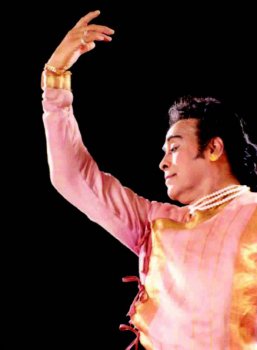
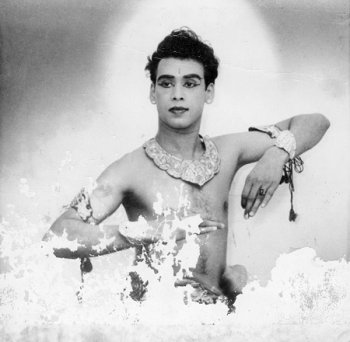
Like the time his first Bharatanatyam guru, one Sukumara Pillai, used to beat him with a stick and kick him! Tired of his beatings more than his paltry teaching, Pratap found in Sri Nataraj, a kinder guru. He came to Delhi by chance to learn Bharatanatyam, but was hired instead to be part of the famous Ramlila production of Bharatiya Kala Kendra, then under the direction of Debendra Shankar. As we all know, Guru Gopinath had set the original production, thus Kathakali and Mohinattam as forms were employed to denote southern characters like Ravana and Mandodari. Thus, while Pratap had come to Delhi to learn dance, because of his ability, he was chosen to perform! He was also paid to dance! A full 100 rupees those days and we are talking of late 1950s, when 100 rupees was worth at least 10,000 of today. Ramlila brought him scholarship to study under Kathak's brightest rising star, Birju Maharaj, just 6-7 years older than Pratap himself but the teacher then was very desirous of teaching Kathak as his uncle Shambhu Maharaj then ruled the roost. The sense of competition was healthy, as Pratap also learnt additionally from Sundarprasad ji and a few classes from Guru Maya Rao. Pratap was a manly looking dancer and it was natural girls were attracted to him and he soon married Vishnupriya, with whom he had two lovely children Asavari and Prashant. Asavari was named so by family friend and relative, the iconic singer Asha Bhonsle. Amjad Ali Khan was Pratap's close friend during Kendra days and the friendship remains till date. Shala Mattingly, the British born American dancer, became a rakhi sister, a relation both have maintained till date. 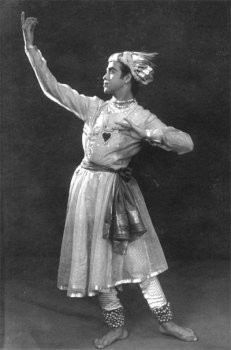
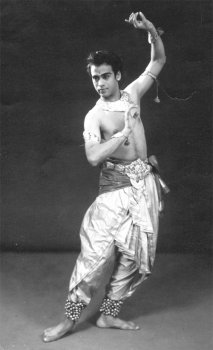
Pratap Pawar was getting established when Durgalal came on the firmament and Pratap was sent abroad to Guyana to teach. Madame Indira Gandhi had just returned from her travels there and on insistence of its Prime Minister had initiated an India Center there, through the ICCR, where Pratap was selected to teach Kathak. Thus, Pratap came to Guyana in 1973 and stayed there for 3 years, taught and created many productions. After a long stint in Guyana, he was sent to Trinidad, where Hans Hanooman Singh, a dynamic Indophile, wanted Pratap to set up base and helped him do that. There was a sizable population of Indian origin and Pratap helped them acquire Kathak too. The then High Commissioner of India to Trinidad was H.H. Maharaj Gaj Singh ji of Jodhpur, a true patron of the arts, so Pratap got good support. From Trinidad, he came to USA often to dance and perform and a chance medical examination brought him to London, which in the end he made home. His work in neighbouring Scotland, Wales and Europe made Kathak go far. In that, he is a global guru of Kathak. 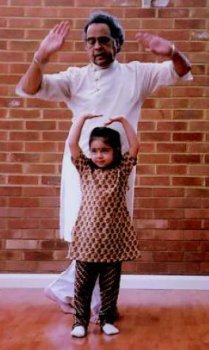 Guru Pratap Pawar with his youngest disciple, granddaughter Budgie In London, Pratap has trained several, of whom Akram Khan is now an international name. He has helped the younger generation like Riaz Rhemutullah, Nisha Radia, Alpana and Deepa acquire the intricacies of his style. Philip McClintock in Guyana, Deveika Chetram in Trinidad remain other serious products. Many awards have come his way like Padma Shri and state awards. As a serious and first ganda-bandha student of Guru Birju Maharaj, Pratap Pawar represents a tradition which he has furthered by his own hard work. He is a committed Kathakaar, thanks to whom Kathak has gone global, much before group works started travelling westward. Pic along this para - Guru Pratap Pawar with his youngest disciple, granddaughter Budgie Today, as he has spent over 50 years dancing and half of those teaching, he can look back with certain pride and sense of achievement at his lifetime journey, which is now becoming a book. Full story in forthcoming biography: My Journey in Dance, Clarion Books-Ekah Bios, pages 138, Rs.1500. 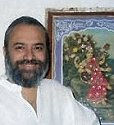 Ashish Mohan Khokar has made writing and recording dance history his mission. As a merit-lister in M.A. History from the Delhi University, he loves the process and technique of writing history and its reconstruction. He is the most sought-after biographer because of this and his 30 years of direct dance writing, with 35 published titles to credit, makes him India's reputed dance historian. With practical background in dance and theory, his opinions are much sought after and respected. He wrote as dance columnist for many magazines like India Today, First City and Life Positive. He was the dance critic of the Times of India in Delhi, then Bangalore, before starting his own dance journal - attendance - now in its 12th year of publication. As India's pioneering arts administrator way back in mid-eighties, he served the Delhi State Akademi and the Festivals of India in France, Sweden, Germany and China and worked as one of the Directors at INTACH, under PM, Rajiv Gandhi's chairmanship. He is currently on many committees and boards, nationally and internationally. attendance-india.com ; dancearchivesofindia.com |